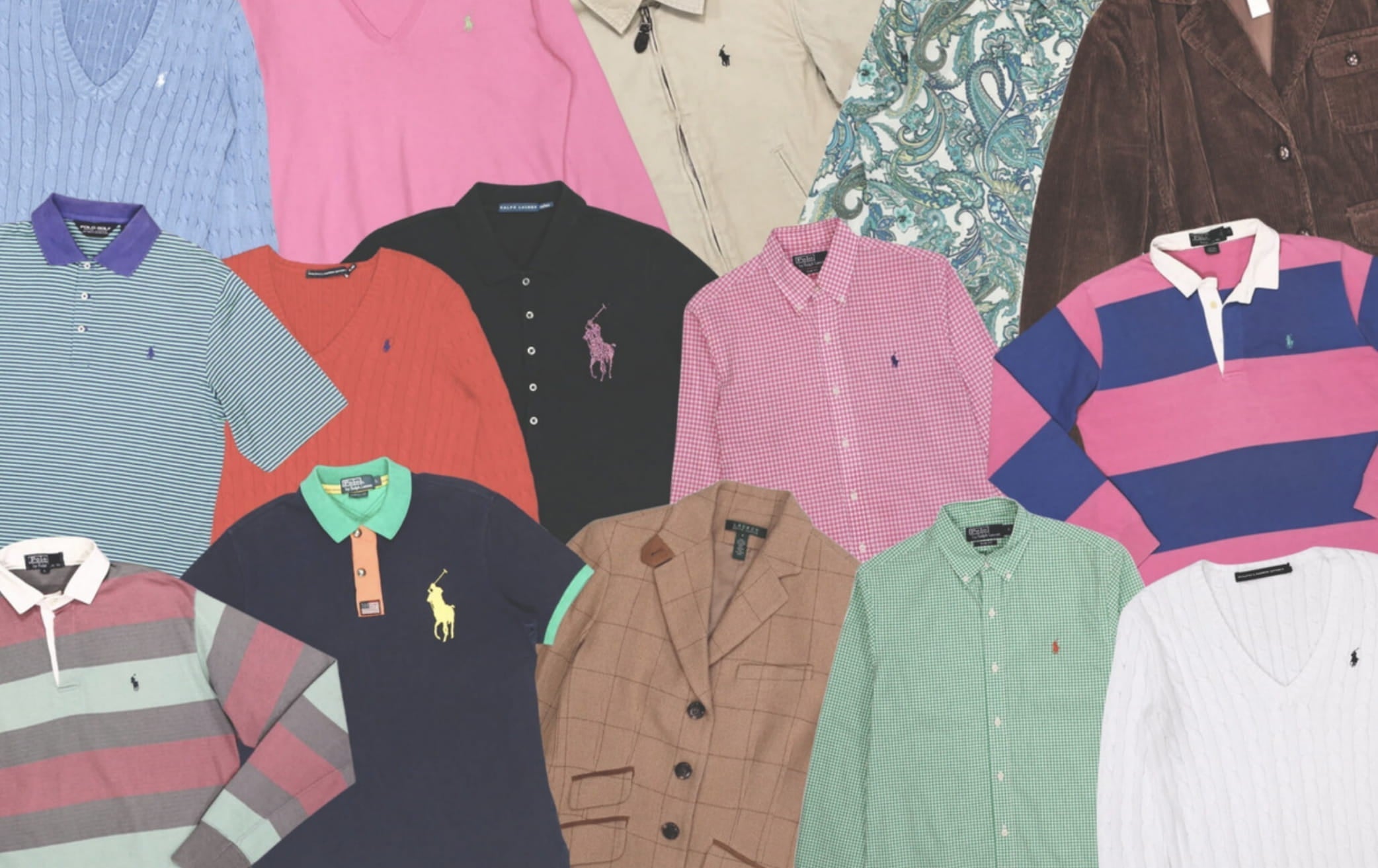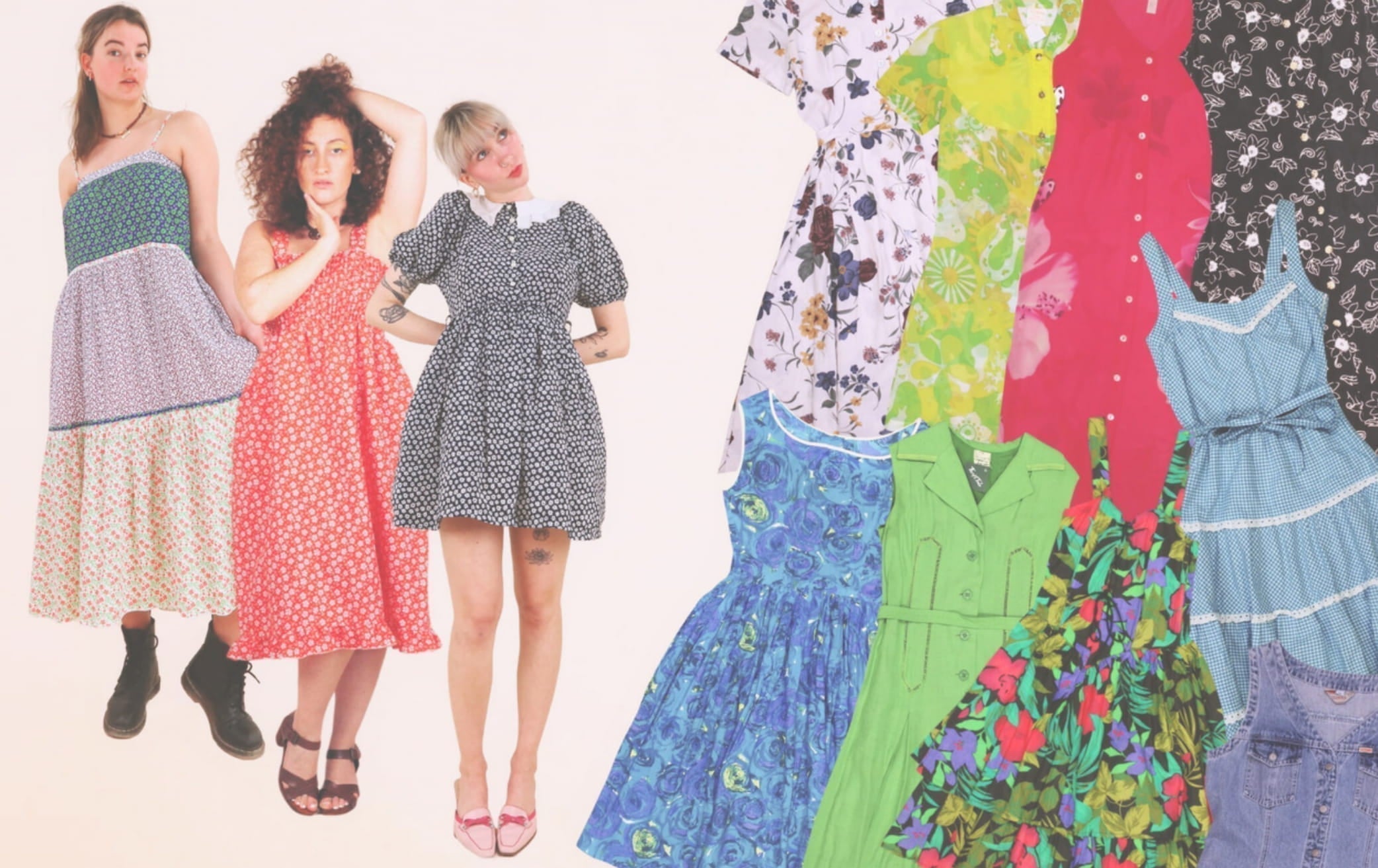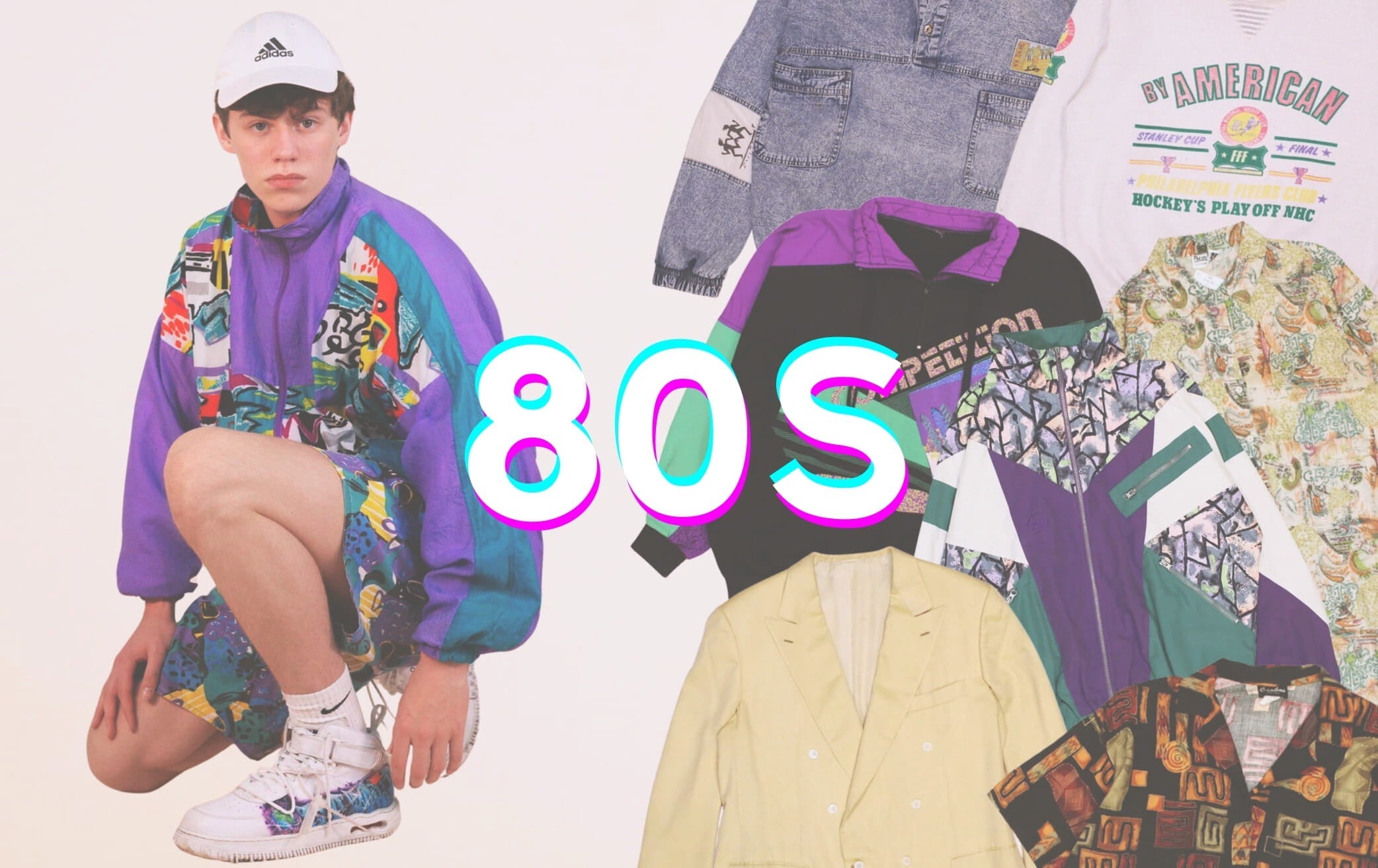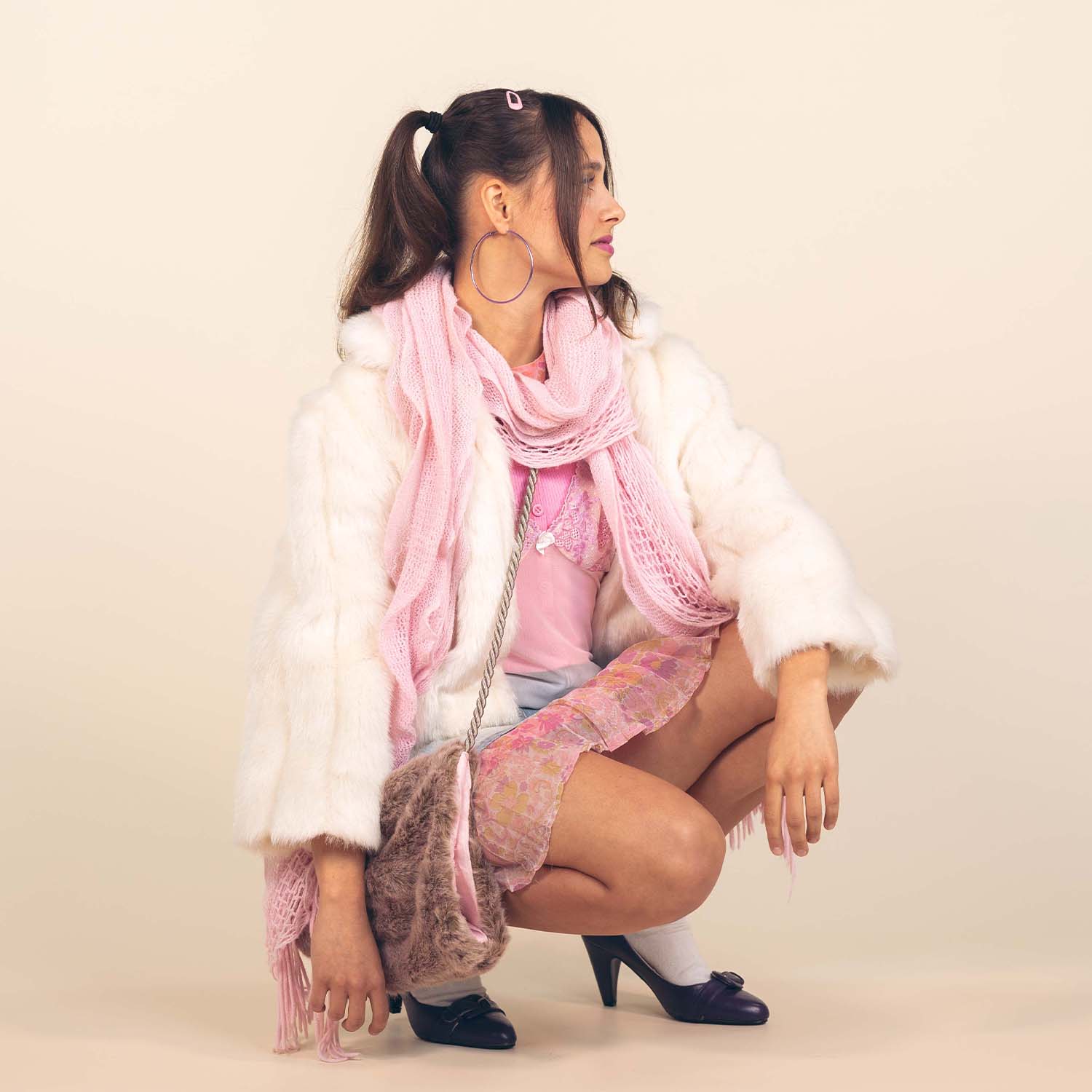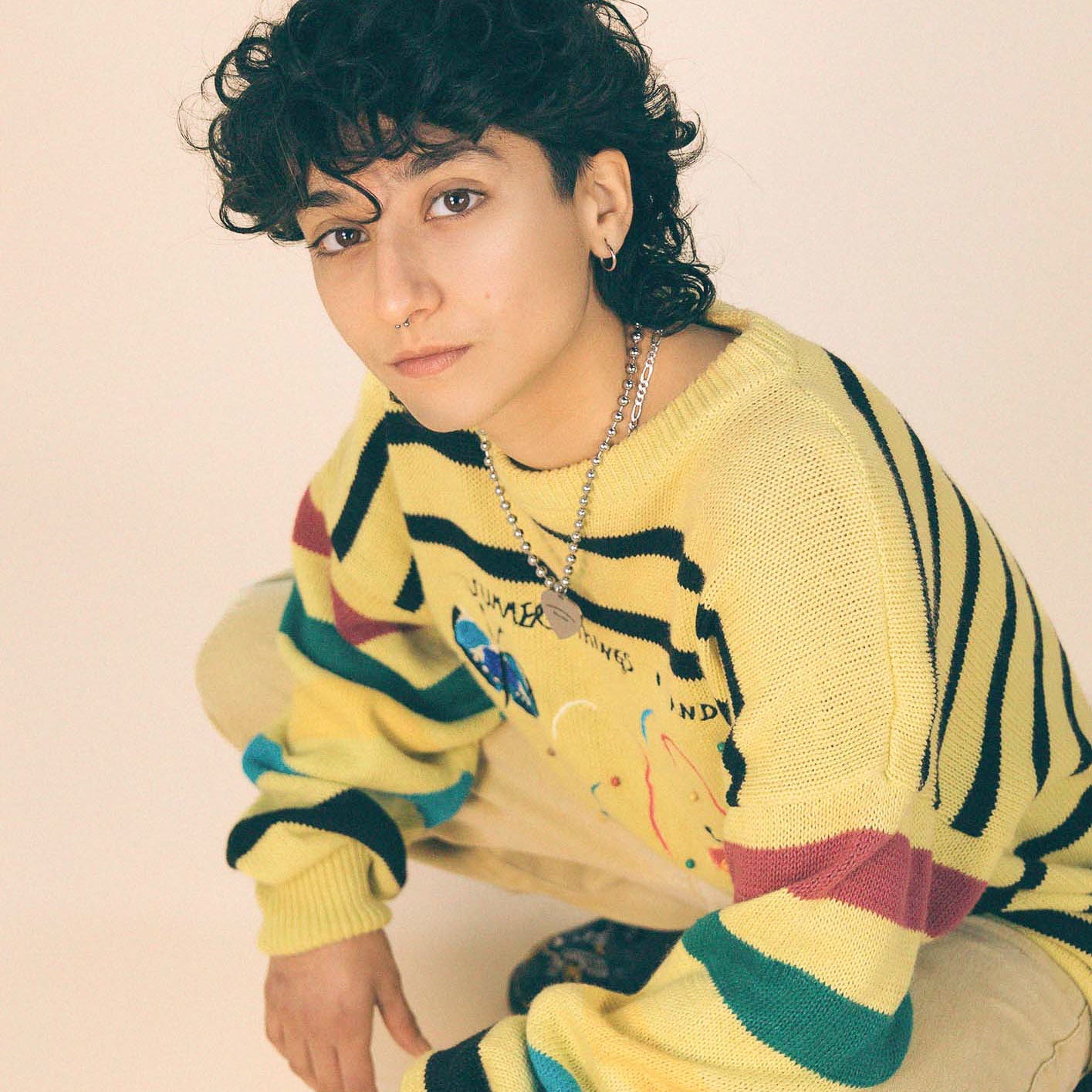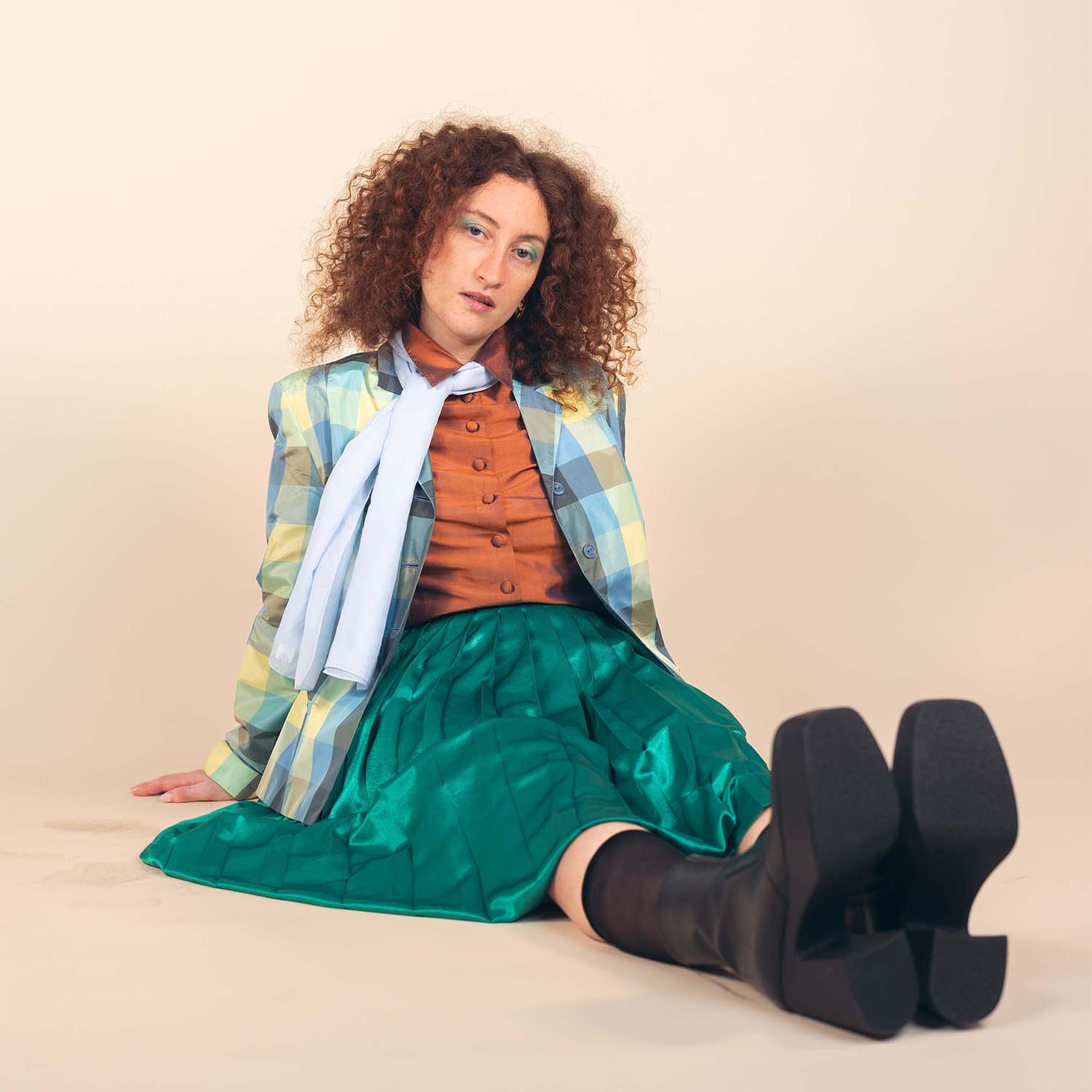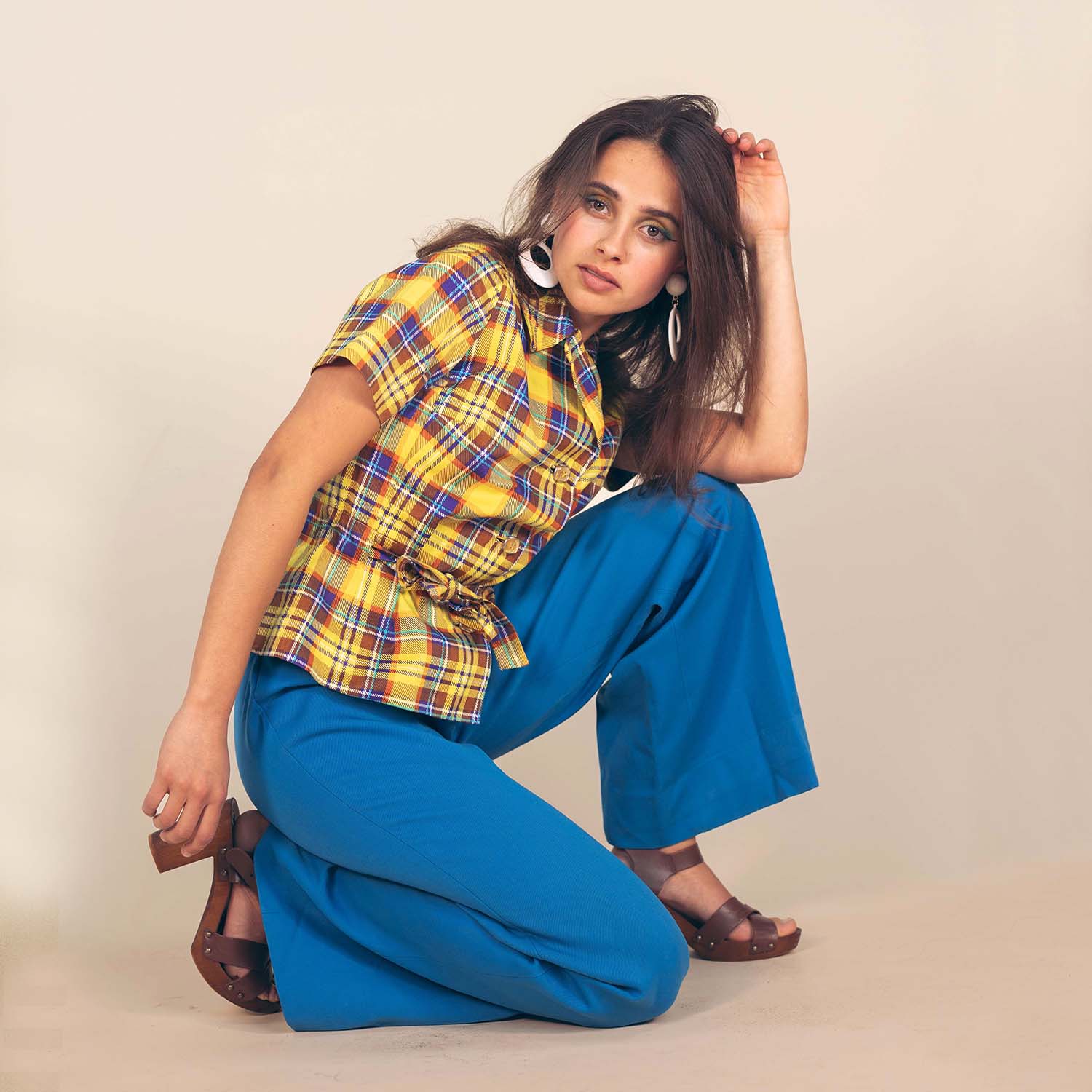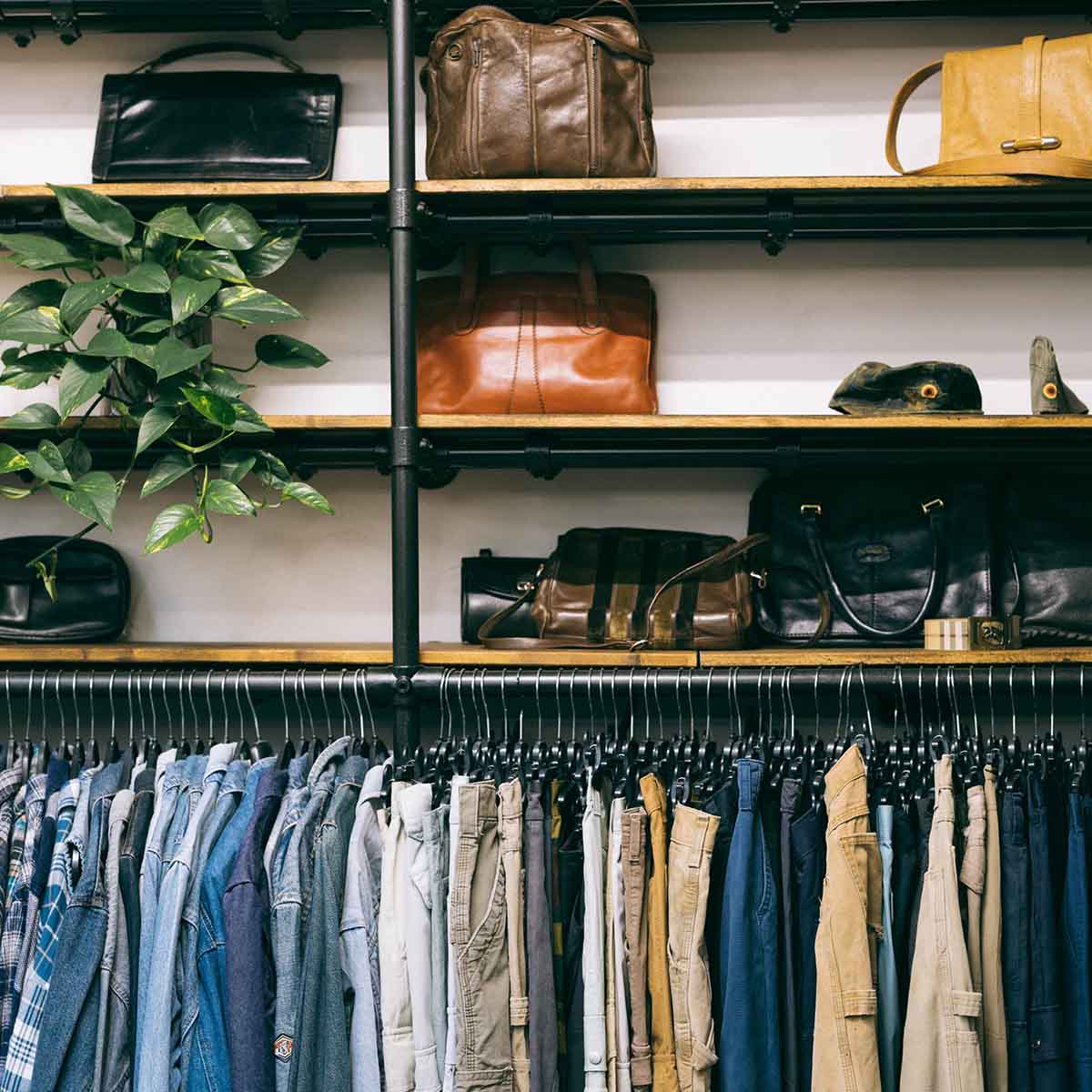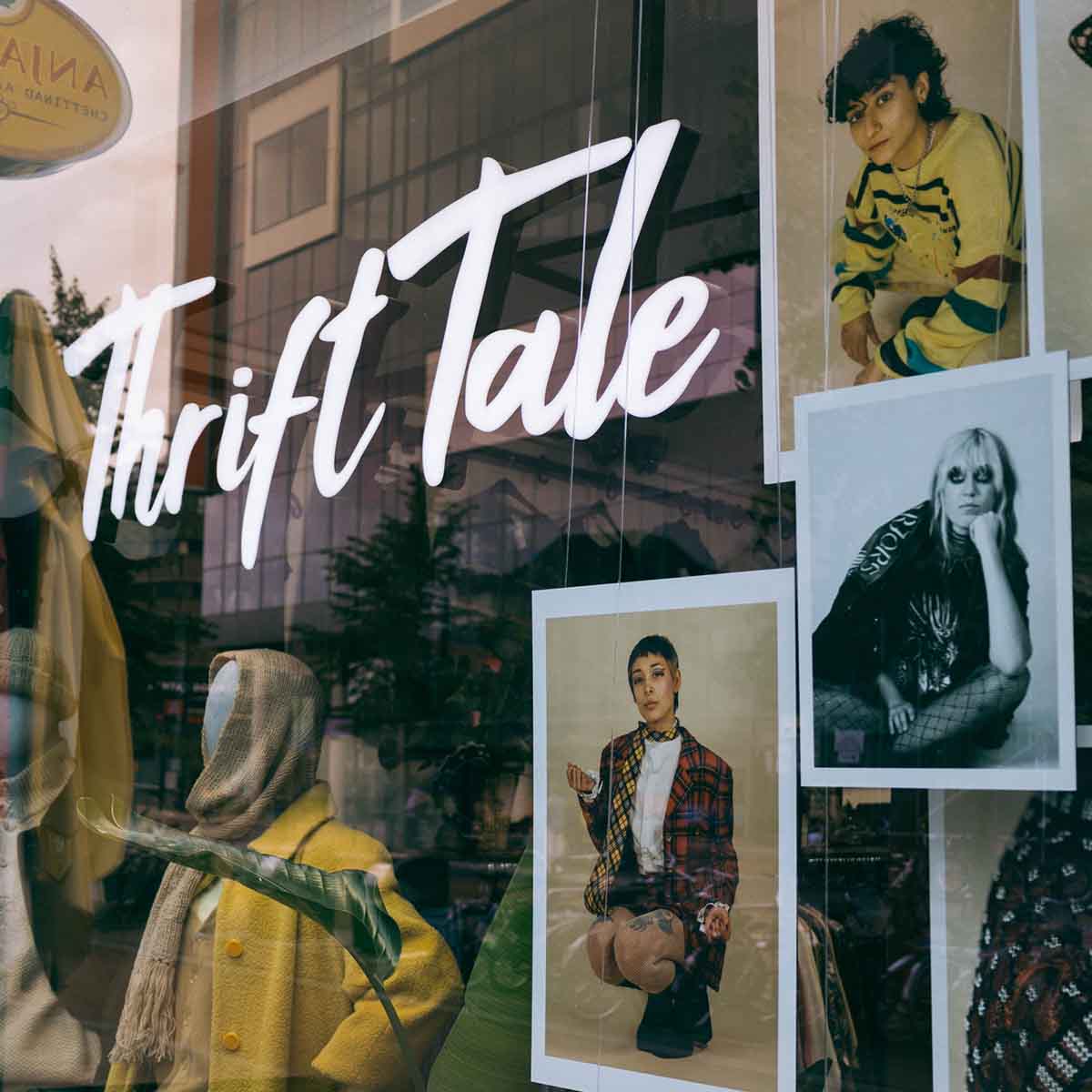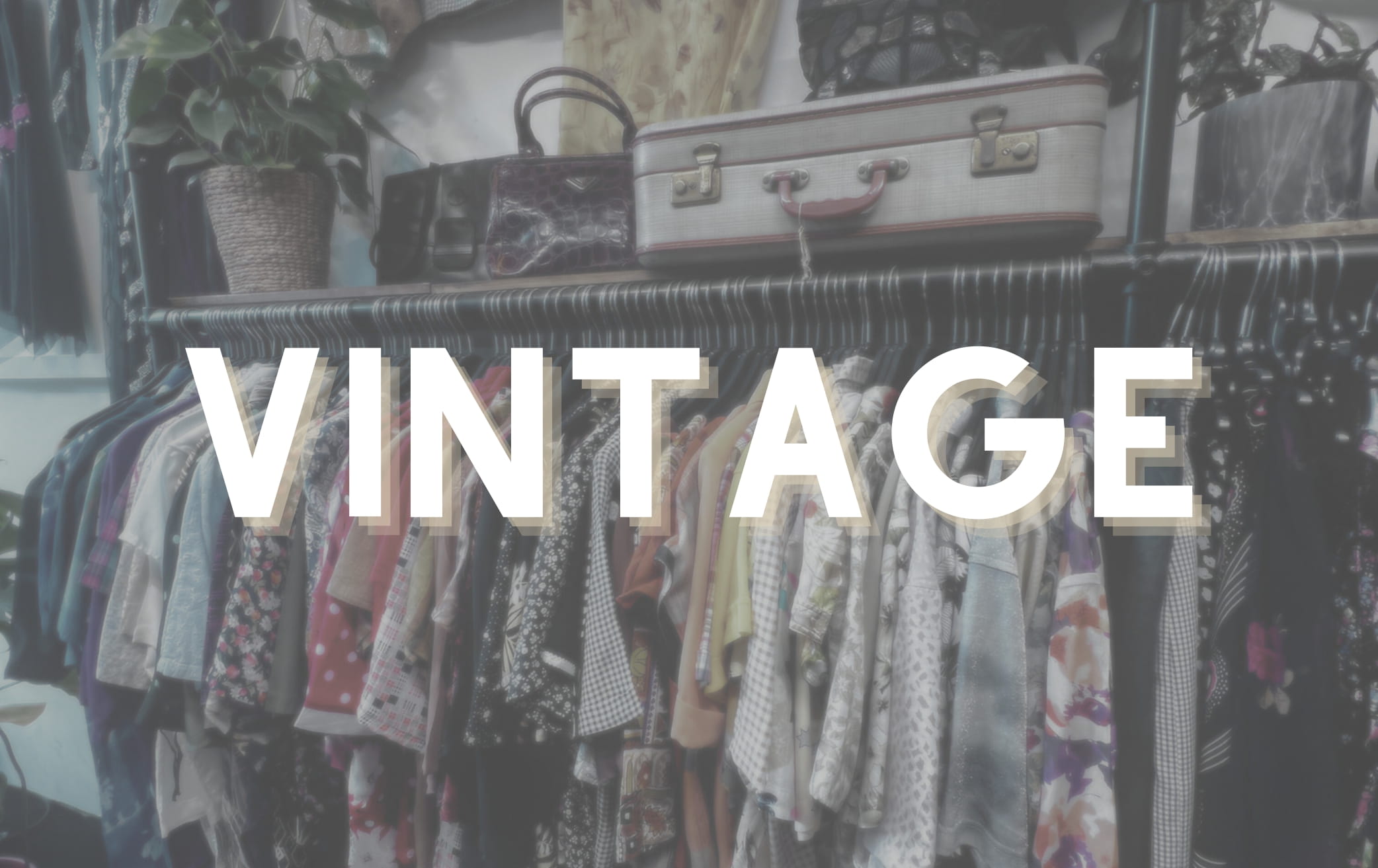
Alles, was Sie vor dem Kauf von Vintage-Kleidung wissen müssen
Wenn man anfängt, Vintage-Kleidung zu kaufen und zu tragen, kann das manchmal überwältigend wirken. Schließlich ist es eine ganz andere Erfahrung als das Einkaufen von Fast Fashion im Einkaufszentrum oder auf der Straße! Man muss sich über Größen, Stoffe, Stile und Pflege informieren; und wie kann man überhaupt sicher sein, dass es echte Vintage-Kleidung ist?
Hier finden Sie also alles, was Sie wissen müssen, bevor Sie Vintage-Kleidung kaufen und tragen:

1. Größen von Vintage-Kleidung
-
Die Größen von Vintage-Kleidung sind nicht dasselbe wie moderne
Die Größen haben sich im Laufe der Jahre erheblich verändert. Eine Vintage-Größe kann 2-4 Nummern kleiner sein als eine moderne Größe. Die Größe EU 40 einer Vintage-Frau kann zum Beispiel eher mit einer modernen EU 36 oder 34 vergleichbar sein; eine Vintage-US 12 entspricht eher einer modernen US 4.
-
Messen Sie sich vor dem Kauf von Vintage-Kleidung
Bevor Sie Vintage-Kleidung kaufen, sollten Sie sich selbst zu Hause ausmessen. Oder messen Sie die Kleidungsstücke, die Ihnen am besten passen, um einen Vergleich zu haben. Bei ThriftTale, , messen wir jedes Kleidungsstück aus und kennzeichnen es mit der modernen Größe, in die es heute passen würde. So können Sie Vintage-Kleidung online kaufen, ohne raten zu müssen.
-
Probieren Sie es an
Wenn Sie persönlich einkaufen, sollten Sie Vintage-Kleidung immer anprobieren, bevor Sie sie kaufen, auch wenn Sie glauben, Ihre Größe zu kennen. Nicht nur die Größenangaben auf Vintage-Kleidung können irreführend sein, sondern auch die Art und Weise, wie die Kleidungsstücke aufgrund des Stoffs und des Stils des jeweiligen Jahrzehnts passen.
2. Vintage-Stoffe verstehen
Moderne Kleidung besteht in der Regel aus synthetischem Material oder einem Gemisch. Moderne synthetische Materialien wie Polyester und Acryl können Stoffe erzeugen, die wie Baumwolle, Wolle oder Seide aussehen und sich auch so anfühlen. In der Regel ist auch etwas Elastan eingewebt, um den Stoff zu dehnen.

Vintage-Stoffe können jedoch ganz andere Eigenschaften haben.
- Vintage-Polyester aus den 50er, 60er und 70er Jahren ist dick und haltbar. Es trocknet schnell, ohne dass man es bügeln muss, und behält seine Struktur und Farbe auch nach Jahrzehnten des Waschens. Aber es ist nicht atmungsaktiv, und manche Sorten können jucken. Es ist nicht für heißes oder feuchtes Wetter geeignet!
- Wenn Sie auf der Suche nach Sommerkleidung sind, achten Sie darauf, dass sie aus atmungsaktiven Stoffen wie Baumwolle, Leinen oder Viskose (Rayon) hergestellt ist.
- Vintage-Denim besteht oft aus reiner Ofenbaumwolle, die nicht dehnbar ist, wie moderne Denims mit Elastan.
3. Zustand der Vintage-Kleidung
Vintage ist natürlich alt und in der Regel auch abgenutzt. Der Zustand kann bei jedem Kleidungsstück unterschiedlich sein. Abnutzungserscheinungen an den Rändern sind normal; manche Stoffe können platzen oder reißen, Knöpfe fallen ab, und Flecken und sogar Zigarettenglut sind erstaunlich häufig. Wenn Sie persönlich einkaufen, prüfen Sie das Kleidungsstück gründlich, um sicherzugehen, dass Sie damit zufrieden sind. Prüfen Sie online die Beschreibung und die Fotos , damit Sie wissen, was Sie erwarten können.
Flecken lassen sich entfernen, Nähte können genäht und Knöpfe ersetzt werden. Sogar der muffige Geruch, der von Kleidung ausgeht, die lange Zeit gelagert wurde, kann durch Einweichen in Essig, Wodka oder einem speziellen Waschmittel entfernt werden, das Gerüche beseitigt.
Der Kauf von getragener oder schlecht erhaltener Vintage-Kleidung kann eine gute Möglichkeit sein, günstige Schnäppchen zu machen, die man schnell wieder in Ordnung bringen kann.
4. Wie erkennt man, ob ein Kleidungsstück wirklich Vintage ist?
Wenn Sie Vintage-Mode kaufen, möchten Sie nicht, dass Sie am Ende etwas kaufen, das in Wirklichkeit moderne, billige und schnelle Mode ist, die als Vintage getarnt ist. Leider kommt es heutzutage immer häufiger vor, dass Verkäufer auf Secondhand-Marktplätzen wie Vinted und Depop die Etiketten von Kleidungsstücken von Anbietern wie Shein herausschneiden und sie als echte Vintage-Kleidung verkaufen.
-
Achten Sie immer auf Etiketten!
Wenn Sie persönlich einkaufen, prüfen Sie sofort die Etiketten. Echte Vintage-Kleidung hat normalerweise nur ein Etikett am Hals oder gar kein Etikett. Vintage-Etiketten können sehr grob, schwer lesbar, verblasst und zerknittert aussehen. Der Text ist oft kursiv gedruckt. Nach den 50er Jahren wurde auf vielen Etiketten von Altkleidern der geschützte Name des verwendeten Stoffes als Verkaufsargument vorne und in der Mitte angegeben. Einige Vintage-Kleider sind handgefertigt und haben daher überhaupt keine Etiketten.

Wenn kein Etikett vorhanden ist, solltenSie sich unter die Konstruktion des Kleidungsstücks ansehen, einschließlich der Nähte und Verschlüsse. Bei Vintage-Kleidung werden eher Metallreißverschlüsse verwendet, während Kunststoffreißverschlüsse erst später aufkamen. Anstelle von Reißverschlüssen finden Sie Knöpfe oder Hakenverschlüsse aus Metall. Wenn die Nähte und Verschlüsse zu ordentlich und zu modern aussehen, ist das wahrscheinlich auch so. Vintage-Kleidung ist im Vergleich zu moderner Technik immer etwas rauer.
-
Prüfen Sie, ob die Kleidung, die Sie online kaufen, wirklich Vintage ist
Wenn Sie immer noch unsicher sind oder diese Details auf dem Kleidungsstück nicht erkennen können, ist es an der Zeit, eine umgekehrte Bildersuche durchzuführen. Machen Sie ein Foto des Kleidungsstücks, oder wenn Sie online einkaufen, machen Sie einen Screenshot oder klicken Sie mit der rechten Maustaste auf das Bild und wählen Sie dann "Bild mit Google suchen" oder geben Sie das Foto in das Google-Suchfeld ein. Auf diese Weise werden alle online vorhandenen Bilder des Artikels angezeigt. Wenn es sich um moderne Fast Fashion handelt, werden Sie das in den Ergebnissen schnell herausfinden. Wenn es sich um echte Vintage-Mode handelt, gibt es wahrscheinlich keine Übereinstimmungen oder Übereinstimmungen, die beweisen, dass es sich um Vintage handelt.

5. Benötigt Vintage-Kleidung besondere Pflege?
Einige Kleidungsstücke im Vintage-Stil benötigen besondere Pflege, und manche sind sogar haltbarer als moderne Kleidungsstücke. Überprüfen Sie alle Etiketten, um den Stoff herauszufinden. Wenn es sich um Vintage-Polyester handelt, können Sie so ziemlich alles damit machen, und es bleibt unversehrt!
Bei alter Seide, Spitze, Leder, Wildleder und Baumwolle muss man jedoch viel vorsichtiger sein. Baumwolle kann beim Waschen einlaufen, Seide muss professionell chemisch gereinigt werden, und Wildleder und Leder brauchen sorgfältige Pflege, Lagerung und Reinigung.

6. Die Kosten für Vintage-Kleidung
Je seltener ein Kleidungsstück ist, desto teurer kann es natürlich sein. Aber Sie können überrascht sein, wie erschwinglich Vintage-Kleidung sein kann.
Für Kleidung aus den 30er- bis 50er-Jahren müssen Sie mit höheren Preisen rechnen, aber ab den 60er-Jahren begann die Massenproduktion von Kleidung für die Modegeschäfte. Das bedeutet, dass Sie für diese Jahrzehnte weitaus mehr Auswahl zu niedrigeren Preisen finden werden.
Vintage-Kleidung kann überall billiger sein als Fast Fashion, aber auch Hunderte oder Tausende kosten. Das hängt von der Seltenheit und dem Zustand der einzelnen Stücke ab und davon, wie begehrt der Stil ist.
Oft kann man Vintage-Kleidung für weniger als den Preis aktueller Trends ergattern, aber wenn man ein teures Stück findet, weiß man, dass es sich lohnt, in es zu investieren. Die Qualität von Vintage-Kleidung ist weitaus besser als die von moderner Kleidung, was bedeutet, dass sie jahrelang halten wird. Und nicht nur das: Das Gefühl, etwas Einzigartiges zu besitzen, ist mehr wert als alles andere. Ganz gleich, ob Sie wenig oder viel für Vintage-Kleidung ausgeben, Sie investieren in etwas, das mehr wert ist als sein Geldwert. Es ist etwas zum Behalten, zum Weitergeben oder zum Verkaufen. Es wird immer seinen Wert behalten.
7. Wo können Sie authentische Vintage-Kleidung kaufen?
Sie können Vintage-Kleidung in Secondhand-Läden, speziellen Vintage-Läden, bei Nachlassverkäufen, auf Flohmärkten und auf Online-Secondhand-Marktplätzen kaufen. Es ist immer eine Überraschung, was Sie dort finden, also gehen Sie unvoreingenommen hinein!
Ein Secondhand-Laden, der auf Spendenbasis arbeitet, hat heute vielleicht nicht mehr viele echte Vintage-Stücke. Den besten Erfolg haben Sie in Gegenden mit einer wohlhabenden und alternden Bevölkerung, wo Sie wahrscheinlich Spenden aus Nachlässen finden werden.

Wenn Sie ein Vintage-Einkaufserlebnis wünschen, bei dem Sie garantiert nur die guten Stücke finden, ohne sich durch eine Menge von Fast-Fashion-Spenden wühlen zu müssen, sollten Sie sich an ein Geschäft für Vintage-Kleidung wenden. Diese können manchmal auf bestimmte Jahrzehnte spezialisiert sein oder allgemeine Vintage-Kleiderläden sein, die Kleidung aus jeder Epoche und jedem Stil führen.
Bei ThriftTale finden Sie eine Auswahl der besten authentischen Vintage-Stile im Laden zum Stöbern und Anprobieren. Jeder Artikel ist speziell beschafft und handverlesen, so dass es sich um Vintage-Perlen ohne Füllmaterial handelt.
Sie können auchonline unter bei ThriftTale nach Vintage-Kleidung stöbern. Dort finden Sie eine riesige Auswahl an Vintage-Kleidung, die wöchentlich aktualisiert wird.
Ist Vintage-Kleidung es wert?
Der Kauf von Vintage-Kleidung kann etwas mehr Arbeit bedeuten, als wenn Sie einfach in ein Modegeschäft gehen und Ihre Größe von der Stange nehmen, aber das ist es allemal wert. Sie können einzigartige Kleidungsstücke besitzen und tragen , die sonst niemand hat und die von weitaus besserer Qualität sind, als man sie heutzutage kaufen kann. Und Sie werden sich beim Tragen dieser Kleidung als etwas ganz Besonderes fühlen. Vintage-Kleidung ist etwas, auf das Sie stolz sein können und das Sie über Jahrzehnte hinweg tragen möchten.
Besuchen Sie unsere Vintage-Läden in den Niederlanden oder kaufen Sie online unter thrifttale.com

